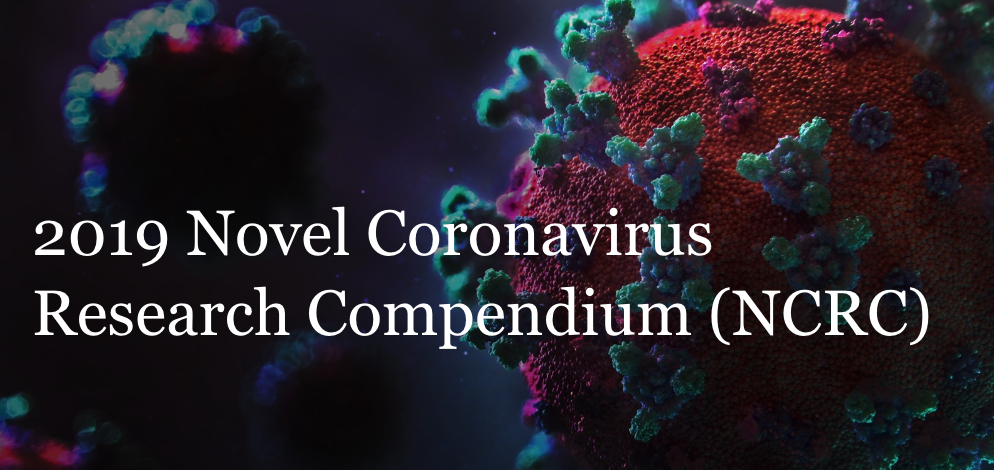Nosocomial Outbreak of SARS-CoV-2 in a “Non-COVID-19” Hospital Ward: Virus Genome Sequencing as a Key Tool to Understand Cryptic Transmission
This article has been Reviewed by the following groups
Discuss this preprint
Start a discussion What are Sciety discussions?Listed in
- Evaluated articles (ScreenIT)
- Evaluated articles (NCRC)
- @hgdrury's saved articles (hgdrury)
- As a non-scientific user, this list collects articles with evaluations that makes research easier (godwyns)
- Godwyns26's - a lay man's list of easy-to-understand science made possible by evaluations. (Godwyns26)
Abstract
Dissemination of severe acute respiratory syndrome coronavirus 2 (SARS-CoV-2) in healthcare institutions affects both patients and health-care workers (HCW), as well as the institutional capacity to provide essential health services. Here, we investigated an outbreak of SARS-CoV-2 in a “non-COVID-19” hospital ward unveiled by massive testing, which challenged the reconstruction of transmission chains. The contacts network during the 15-day period before the screening was investigated, and positive SARS-CoV-2 RNA samples were subjected to virus genome sequencing. Of the 245 tested individuals, 48 (21 patients and 27 HCWs) tested positive for SARS-CoV-2. HCWs were mostly asymptomatic, but the mortality among patients reached 57.1% (12/21). Phylogenetic reconstruction revealed that all cases were part of the same transmission chain. By combining contact tracing and genomic data, including analysis of emerging minor variants, we unveiled a scenario of silent SARS-CoV-2 dissemination, mostly driven by the close contact within the HCWs group and between HCWs and patients. This investigation triggered enhanced prevention and control measures, leading to more timely detection and containment of novel outbreaks. This study shows the benefit of combining genomic and epidemiological data for disclosing complex nosocomial outbreaks, and provides valuable data to prevent transmission of COVID-19 in healthcare facilities.
Article activity feed
-

Our take
This study, available as a preprint and thus not yet peer-reviewed, investigated a COVID-19 outbreak in two wards in a large hospital in Portugal. Large scale testing was initiated after a recently discharged patient presented to the emergency department and tested positive for COVID-19. This individual was also a close contact of a current inpatient in the hospital within a non-COVID-19 ward. In total, 27 out of 102 staff (26.4%) and 21 out of 92 (22.8%) inpatients in the single non-COVID-19 ward of interest tested positive. Whole-genome sequencing and bioinformatics analysis determined that cases were part of a single origin SARS-CoV-2 variant, belonging to the COG-UK lineage B.1.1 and Nextstrain clade 20B. Most individuals were asymptomatic during the time of testing, suggesting likely silent transmission. The …
Our take
This study, available as a preprint and thus not yet peer-reviewed, investigated a COVID-19 outbreak in two wards in a large hospital in Portugal. Large scale testing was initiated after a recently discharged patient presented to the emergency department and tested positive for COVID-19. This individual was also a close contact of a current inpatient in the hospital within a non-COVID-19 ward. In total, 27 out of 102 staff (26.4%) and 21 out of 92 (22.8%) inpatients in the single non-COVID-19 ward of interest tested positive. Whole-genome sequencing and bioinformatics analysis determined that cases were part of a single origin SARS-CoV-2 variant, belonging to the COG-UK lineage B.1.1 and Nextstrain clade 20B. Most individuals were asymptomatic during the time of testing, suggesting likely silent transmission. The findings highlight the importance of periodic testing of staff and patients in healthcare settings for earlier detection of cases, and prevention and control of outbreaks.
Study design
cross-sectional
Study population and setting
This study investigated a COVID-19 outbreak in a large hospital in Portugal, which provides care to about 250,000 people and has about 1,500 employees. An outbreak took place in a non-COVID-19 ward (Ward B) in Summer 2020. The investigation was triggered following presentation to the emergency department by an individual who had concluded a hospital stay three days prior in another ward (Ward A). This individual was a close contact of a current inpatient in the non-COVID-19 ward (Ward B). The inpatient and a clinician (from Ward B) presented with COVID-19 like symptoms and subsequently tested positive, triggering further testing of close contacts, or persons presenting with symptoms in both wards in the 15 days prior. In total, 245 staff and patients were tested for SARS-CoV-2. Nasal and oropharyngeal swabs were collected, and RT-PCR was performed. RNA samples that were positive for SARS-CoV-2 were sent for whole-genome sequencing and bioinformatics analysis.
Summary of main findings
No cases were detected among 51 persons tested in Ward A. However, in Ward B, 27 out of 102 staff (26.4%) and 21 out of 92 (22.8%) inpatients tested positive. Most staff were asymptomatic at testing and all recovered. While inpatients were mostly asymptomatic at testing, mortality rate was high, 12 out of 21 died (57.1%). Results of high-quality SARS-CoV-2 genome sequences from 39 positive samples (22 staff and 17 patients) showed that all cases were part of a single origin, belonging to the COG-UK lineage B.1.1 and Nextstrain clade 20B, with spike amino acid changes D614G and L176F. The investigators hypothesized that the virus was likely introduced to the ward a few weeks before the large screening, then spread through interactions among health care workers, and interactions between health care workers and patients. Patient-to-patient transmission was very limited. Following the investigation, the hospital put in place and reinforced stricter infection prevention and control measures.
Study strengths
Use of reverse-transcription PCR testing to confirm COVID-19 diagnosis. Genome sequences associated with the outbreak had >88% of the genome covered by at least 10-fold.
Limitations
While investigators hypothesized about which health care workers and patients could have been the index case given the epidemiologic and phylogenetic data, this could not be definitively determined.
Value added
This study highlights the usefulness of combining epidemiologic and genomic data in improving understanding about transmission of SARS-CoV-2.
-
-

SciScore for 10.1101/2021.02.20.20248421: (What is this?)
Please note, not all rigor criteria are appropriate for all manuscripts.
Table 1: Rigor
Institutional Review Board Statement not detected. Randomization not detected. Blinding not detected. Power Analysis not detected. Sex as a biological variable not detected. Table 2: Resources
Software and Algorithms Sentences Resources Briefly, naso and oropharyngeal swabs were collected from patients and HCW, and RNA was subsequently extracted using m2000sp Abbott and then subjected to real-time reverse transcription PCR (RT-PCR) assay targeting using m2000rt Abbott. Abbottsuggested: (Abbott, RRID:SCR_010477)Regions with depth of coverage below this threshold were automatically masked in INSaFLU pipeline by placing undefined bases “N” in the consensus sequence (whenever these regions enroll SNP phylogenetic … SciScore for 10.1101/2021.02.20.20248421: (What is this?)
Please note, not all rigor criteria are appropriate for all manuscripts.
Table 1: Rigor
Institutional Review Board Statement not detected. Randomization not detected. Blinding not detected. Power Analysis not detected. Sex as a biological variable not detected. Table 2: Resources
Software and Algorithms Sentences Resources Briefly, naso and oropharyngeal swabs were collected from patients and HCW, and RNA was subsequently extracted using m2000sp Abbott and then subjected to real-time reverse transcription PCR (RT-PCR) assay targeting using m2000rt Abbott. Abbottsuggested: (Abbott, RRID:SCR_010477)Regions with depth of coverage below this threshold were automatically masked in INSaFLU pipeline by placing undefined bases “N” in the consensus sequence (whenever these regions enroll SNP phylogenetic markers, these were inspected to ensure the correct phylogenetic placement of all genomes). INSaFLUsuggested: NoneResults from OddPub: We did not detect open data. We also did not detect open code. Researchers are encouraged to share open data when possible (see Nature blog).
Results from LimitationRecognizer: An explicit section about the limitations of the techniques employed in this study was not found. We encourage authors to address study limitations.Results from TrialIdentifier: No clinical trial numbers were referenced.
Results from Barzooka: We did not find any issues relating to the usage of bar graphs.
Results from JetFighter: We did not find any issues relating to colormaps.
Results from rtransparent:- Thank you for including a conflict of interest statement. Authors are encouraged to include this statement when submitting to a journal.
- Thank you for including a funding statement. Authors are encouraged to include this statement when submitting to a journal.
- No protocol registration statement was detected.
-


